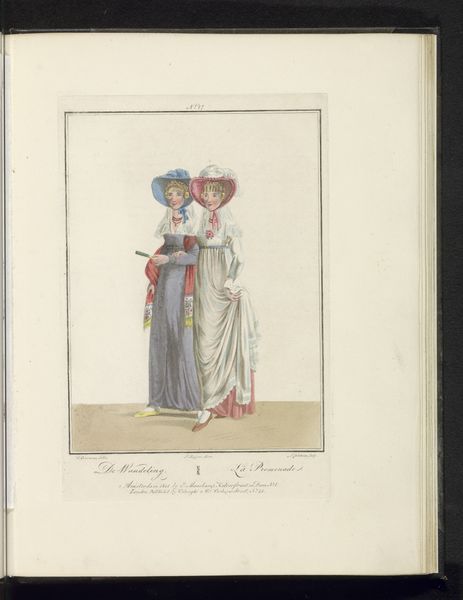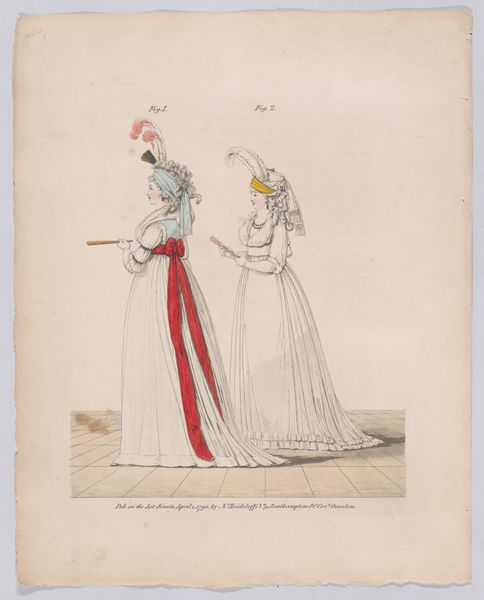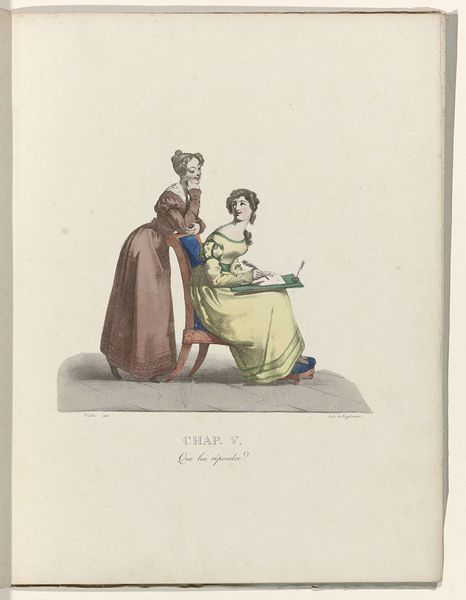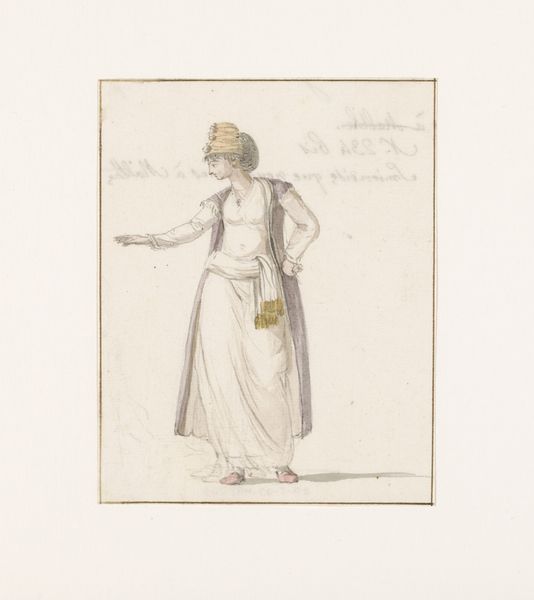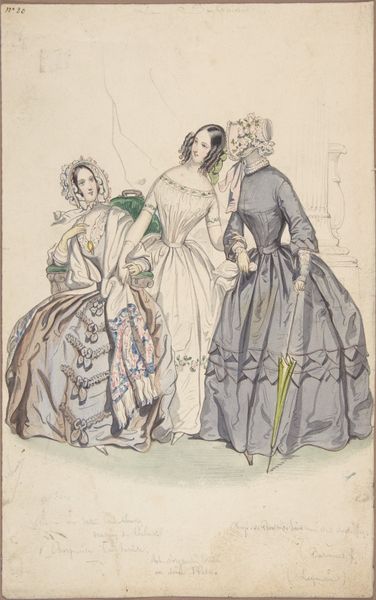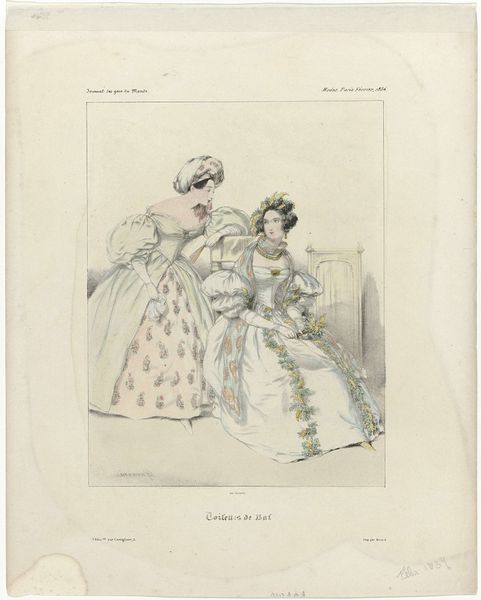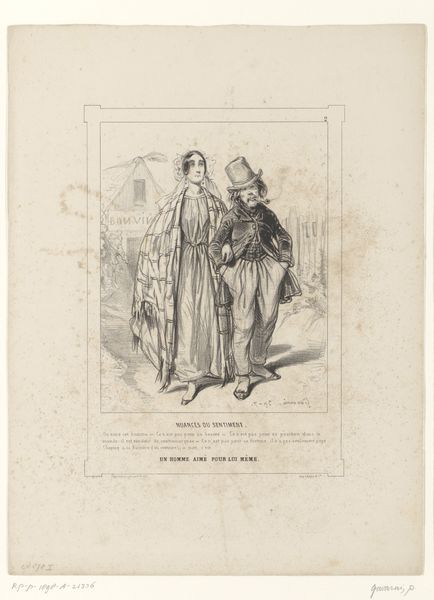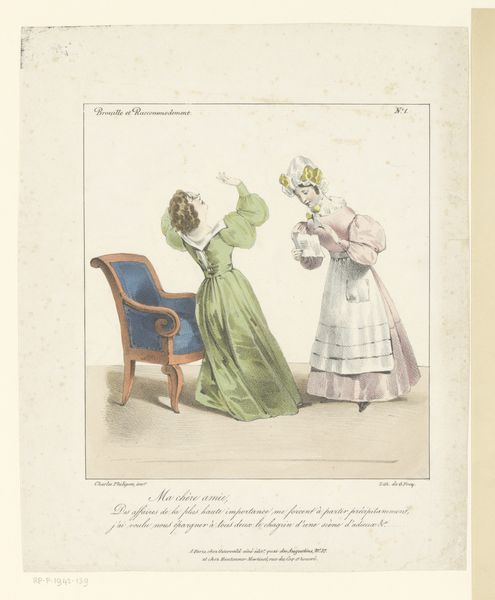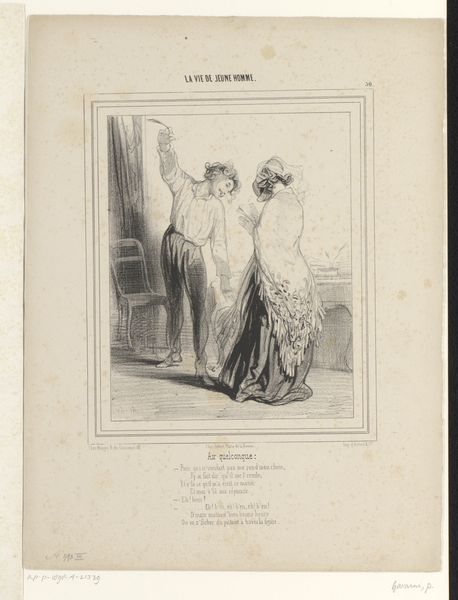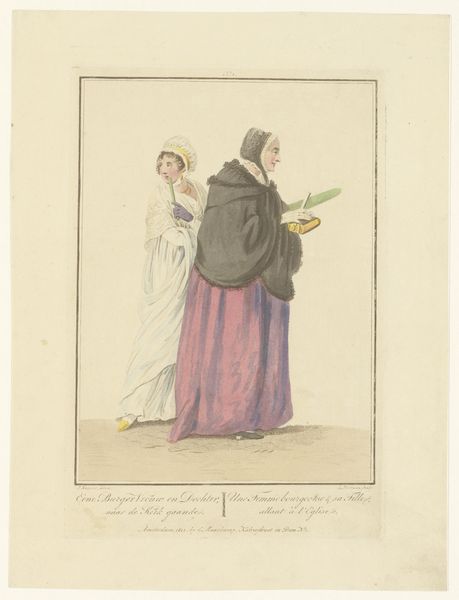
print, watercolor
#
neoclacissism
# print
#
pencil sketch
#
watercolor
#
genre-painting
#
watercolor
Dimensions: 200 mm (height) x 144 mm (width) (plademaal)
Curator: Immediately striking; those bright watercolors over a delicate pencil sketch give it such a light, almost ephemeral quality. Editor: Yes, it is a very interesting work. Here we have "The Three Graces" by Oluf Olufsen Bagge, made between 1819 and 1820, and currently held at the Statens Museum for Kunst. A print, combining the pencil and watercolor medium. Curator: I'm particularly drawn to the clothing and its material presence; you can almost feel the weight and drape of the fabric despite it being a print. Look at the pleating, the detail around the hems, the way accessories become structural. Editor: Indeed. These women represent a very specific segment of society. You have to consider the art market in Copenhagen at the time and who would be buying or commissioning such works. They depict ideal fashionable women—and it's about the performative nature of that image. Curator: Exactly! The material itself is telling—this isn't some grand oil painting destined for a palace wall, it's a more intimate piece, something intended for a middle-class parlor, perhaps. Something mass produced... The context and the distribution methods would certainly inform its cultural value. Editor: It speaks volumes about social aspiration and access to culture at that point in history. These were commodities consumed by the bourgeois class who also attended exhibitions and formed art unions; how accessible was art like this, really, to the common person? Curator: It leads me to wonder about the availability and trade of watercolor pigments. The intensity of the colours suggests access to specific materials... Also, think of the process; from the pencil sketching to final coloring! Editor: That's a pertinent consideration. But this piece speaks so clearly of the democratization of imagery and taste that was only really taking off in Europe, and how visual messaging in this form helps inform cultural attitudes about femininity and class identity in Copenhagen, Denmark, and beyond. Curator: The means and availability certainly informed that message, its reception. The labour involved speaks just as much about what Bagge sought to show with his piece. Editor: Absolutely! A fascinating artifact. Curator: I quite agree!
Comments
No comments
Be the first to comment and join the conversation on the ultimate creative platform.

